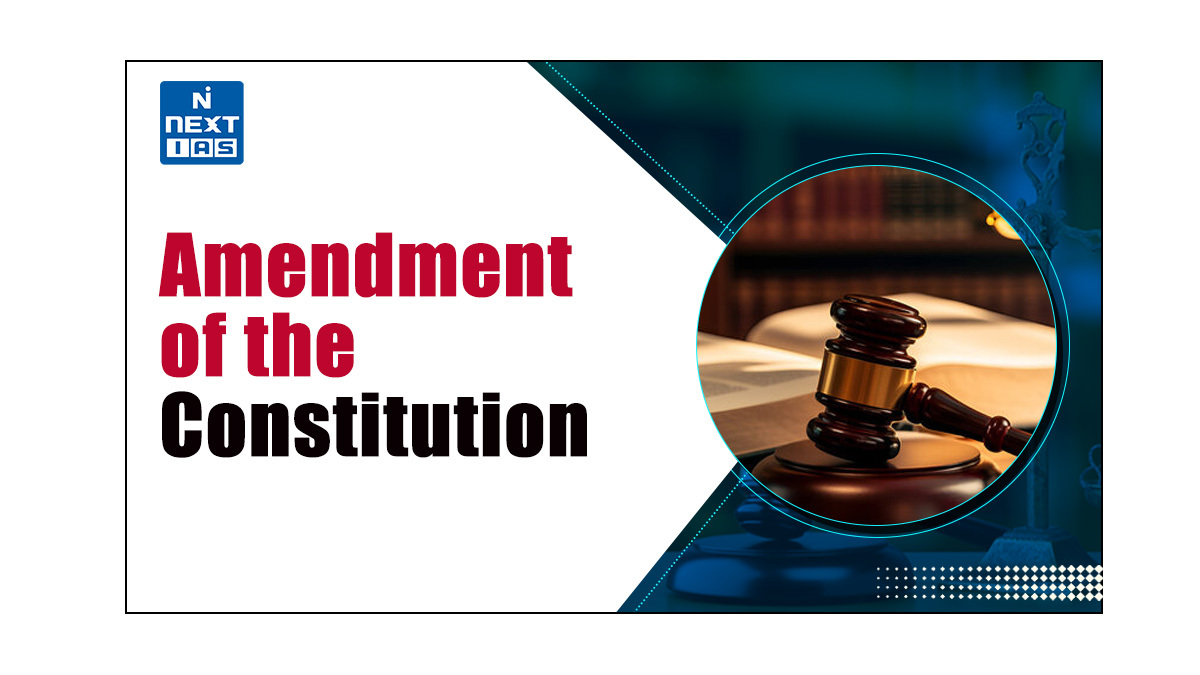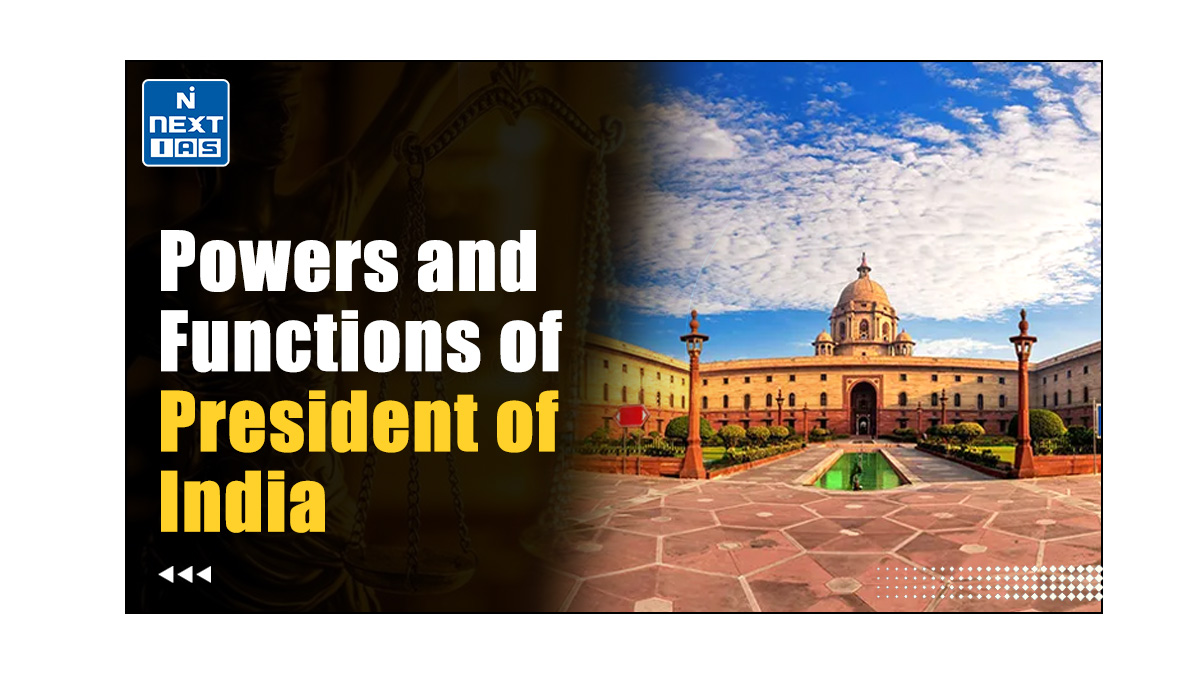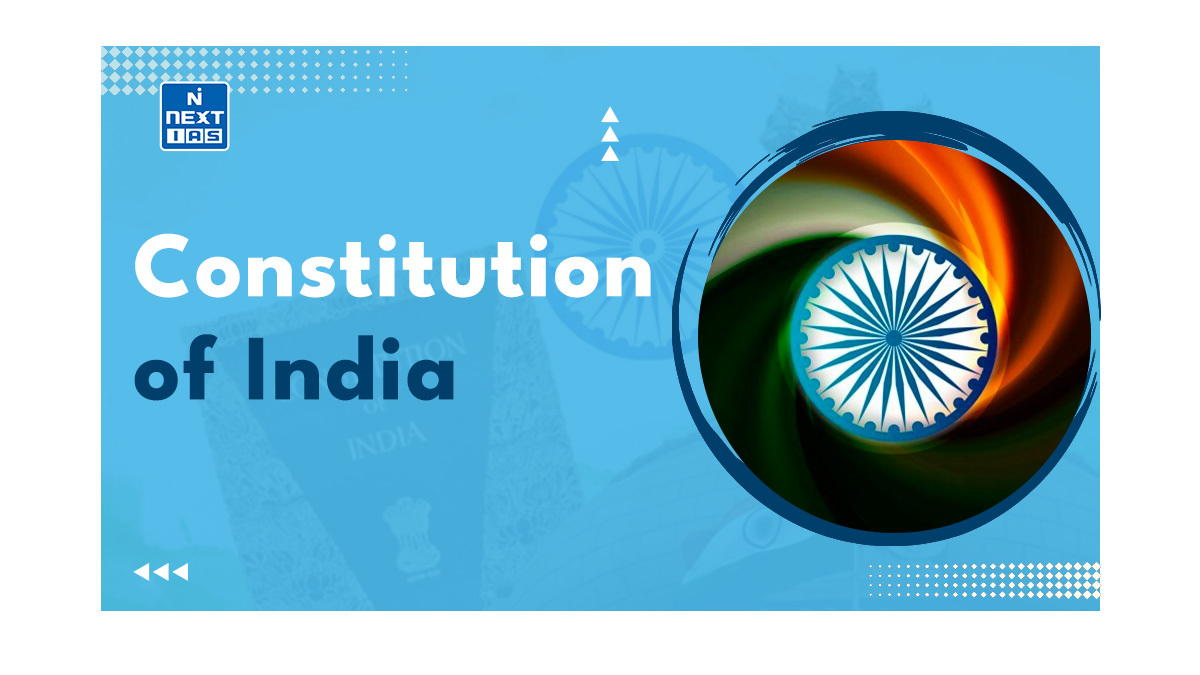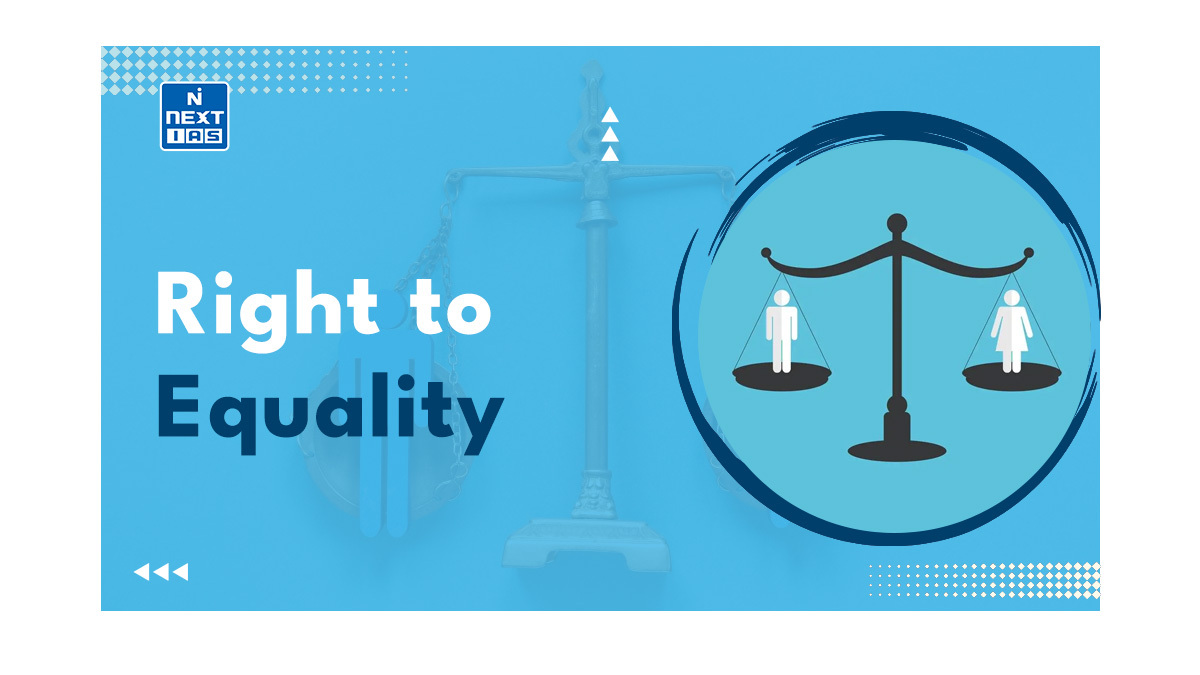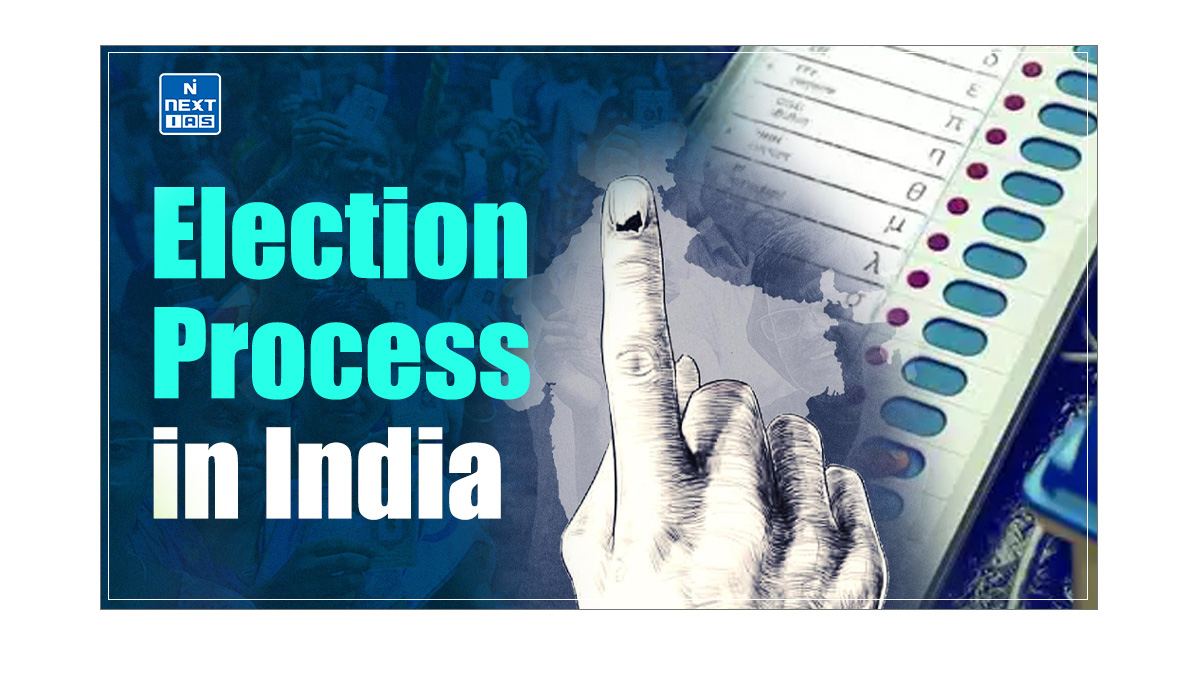
Public Interest Litigation (PIL) has emerged as a pivotal instrument in the Indian judicial system, empowering the common man to access the highest echelons of justice. Through this transformative legal mechanism, courts have addressed a myriad of social injustices and governance failures, ensuring that the marginalized and voiceless segments of society find representation. This article of NEXT IAS aims to study in detail the Public Interest Litigation (PIL), its meaning, evolution, features, significance, challenges, and other related aspects.
Meaning of Public Interest Litigation (PIL)
- Public Interest Litigation (PIL) in India refers to a legal mechanism wherein any public-spirited citizen or social organization can move the court for the enforcement of the rights of any person or group of persons who, due to their poverty, ignorance, or socio-economic disadvantaged position, are themselves unable to approach the court to seek remedies.
- Thus, in a PIL, any member of the public having ‘sufficient interest’ can approach the court to enforce the rights of other persons and redress a common grievance.
- The Supreme Court has defined Public Interest Litigation (PIL) as “a legal action initiated in a court of law for the enforcement of public interest or general interest in which the public or a class of the community have pecuniary interest or some interest by which their legal rights or liabilities are affected.”
- The Public Interest Litigation (PIL) in India is also known by other names:
- Social Action Litigation (SAL),
- Social Interest Litigation (SIL) and
- Class Action Litigation (CAL).
Objectives of Public Interest Litigation (PIL)
The core objectives of Public Interest Litigation (PIL) in India are:
- Vindication of the rule of law,
- Facilitating effective access to justice for the socially and economically weaker sections of society, and
- Meaningful realization of the Fundamental Rights.
Origin of Public Interest Litigation (PIL)
- The concept of Public Interest Litigation (PIL) originated and developed in the USA in the 1960s.
- It was realized that the ordinary marketplace for legal services was not able to provide legal representation to significant segments of the population and interests, such as the poor, environmentalists, racial and ethnic minorities, etc.
- It was in this context that PIL was designed to provide legal representation to such unrepresented groups and interests.
Introduction and Evolution of PIL in India
- The concept of Public Interest Litigation (PIL) was introduced in India in the early 1980s.
- The emergence of PIL in India is mainly attributed to the Judicial Activism of the Supreme Court.
- Justice V.R. Krishna Iyer and Justice P.N. Bhagwati were the pioneers of the concept of PIL in India.
- The introduction of PIL in India was facilitated by the relaxation of the traditional rule of ‘locus standi’.
- The rule of ‘locus standi’ says that – only that person whose rights are infringed alone can move the court for the remedies
- The PIL is an exception to this traditional rule of ‘locus standi’.
Famous Judgements Related to PIL in India
Some landmark judgments which has led to the evolution of the Public Interest Litigation (PIL) in India are:
- Mumbai Kamagar Sabha vs. Abdul Thai (1976) – In this case, Justice Krishna Iyer laid the foundational concept of Public Interest Litigation (PIL) in India, promoting the idea that collective societal issues could be addressed through legal channels.
- S.P. Gupta vs. Union of India (1981) – In this case, Justice P.N. Bhagwati expanded the scope of PIL, stating that “any member of the public or social action group acting bonafide” could invoke the jurisdiction of High Courts or the Supreme Court to seek redressal for the rights of those unable to approach the court due to disabilities.
- This judgment established PIL as a tool for enforcing public duties and addressing executive misdeeds.
- Indian Banks Association, Bombay & Ors. vs. M/s Devkala Consultancy Service and Ors – In this case, the Supreme Court declared that even a case filed for personal grievance could be considered under PIL if it serves the public interest, enhancing judicial oversight in matters affecting societal welfare.
- M.C Mehta vs. Union of India – In this environmental PIL, the Supreme Court ruled that the petitioner did not need to be a riparian owner to challenge pollution in the Ganga River.
- The case emphasized the right of any concerned citizen to seek enforcement of environmental laws for the public good.
Features of Public Interest Litigation (PIL)
The various features of Public Interest Litigation (PIL) in India are as follows:
- Strategic Arm of the Legal Aid Movement – PIL aims to make justice accessible to marginalized communities, particularly the poor who constitute the lowest strata of society.
- Cooperative Effort – PIL involves collaboration between the petitioner, the State or Public Authority, and the Court to ensure the protection of constitutional and legal rights of vulnerable sections of society and to deliver social justice to them.
- Distinct from Traditional Litigation – Unlike traditional litigation, PIL does not involve disputes between two opposing parties seeking relief. Instead, it focuses on promoting and vindicating public interest.
- Promotion of Public Interest – PIL is brought before the court to promote public interest rather than enforcing the rights of one individual against the other.
- Addressing Violations of Rights – PIL emphasizes addressing violations of constitutional and legal rights of large sections of society, especially those who are economically or socially disadvantaged.
- Redressing Public Injury – PIL aims to redress public injury, enforce public duties, protect collective rights and interests, and vindicate the public interest.
- Assertive Role of the Court – In PIL, the court plays a more assertive and proactive role compared to traditional actions, taking a creative approach to determining actions and outcomes toward helping the disadvantaged sections of society.
- Flexibility within Judicial Tenets – As compared to the traditional cases, PIL proceedings adopt a flexible approach towards their judicial proceedings.
Significance of Public Interest Litigation (PIL)
The significance of Public Interest Litigation (PIL) in India can be outlined as follows:
- Aids Implementation of DPSP (Article 39A) – It aims to give practical shape to the DPSP contained under Article 39A which directs the state to secure equal justice and free legal aid to the poor.
- Access to Justice – By allowing public-spirited individuals and organizations to advocate for the rights of marginalized and disadvantaged sections, it enhances access to justice.
- Enforcement of Rights – PIL serves as a mechanism for enforcing fundamental rights and holding authorities accountable for their actions or inactions.
- Promotion of Public Interest – PIL is instrumental in promoting the public interest by addressing issues of broader societal concern, such as environmental protection, public health, human rights, and social justice.
- Promotes Judicial Activism – PIL fosters judicial activism by encouraging courts to take proactive measures to protect the rights of citizens and uphold constitutional principles.
- Social Reform – PIL plays a crucial role in bringing about social reform and progressive change by challenging outdated laws, discriminatory practices, and systemic injustices.
- Promotes Accountability – PIL enhances democratic accountability by providing a forum for citizens to voice their grievances and seek redressal for grievances arising from governmental actions.
Concerns Associated with Public Interest Litigation (PIL)
Some concerns associated with Public Interest Litigation (PIL) in India include:
- Misuse and Abuse – Over the years, PIL has been used by individuals or organizations for filing frivolous or politically motivated cases to advance their own agendas or harass opponents. This amounts to an abuse of the process of law.
- Rise in Burden of Judiciary – The introduction of PIL in India has led to a significant rise in the number of cases pending before the already overburdened judiciary.
- Frivolous Cases – leads to encroachment on judicial time due to a rise in the number of frivolous PILs filed.
- Delaying Developmental Activities – Many times, PIL has been used as a tool to delay developmental activities. For example, a PIL was filed against developmental activities at the premises of Puri Jagannath Temple.
- Fear of Judicial Overreach – It, sometimes, leads to Judicial Overreach, where courts are perceived to be encroaching upon the domain of the executive and legislative branches of government.
- Enforcement Challenges – Even when courts issue directives or orders in PIL cases, enforcement mechanisms may be lacking, particularly in cases involving structural or systemic issues. Without effective implementation, court judgments may fail to bring about the desired outcomes or lasting change.
Supreme Court Guidelines for Admitting PIL
The Supreme Court laid down the following guidelines for checking the misuse of the Public Interest Litigation (PIL) in India:
- The court should promote genuine and legitimate Public Interest Litigations (PILs) and deter PILs filed for ulterior motives or extraneous considerations.
- The High Courts should establish comprehensive rules that encourage genuine PILs and discourage those filed with oblique motives.
- The court should verify the credentials of the petitioner as well as the accuracy and validity of the contents of the petition before admitting a PIL.
- The Court should be fully satisfied that substantial public interest is involved before entertaining the petition.
- The Court should ensure that the petition that involves larger public interest, gravity, and urgency must be given priority over other petitions.
- The Court before entertaining the PIL must ensure that the PIL is aimed at redressal of genuine public harm and public injury. The Court should also ensure that there is no personal gain, private motive, or oblique motive behind filing a PIL.
- The Court should also ensure that the petitions filed by busybodies for extraneous and ulterior motives must be discouraged by imposing exemplary costs or adopting similar novel methods to curb frivolous petitions and petitions filed for extraneous considerations.
Way Forward
The following steps can be taken to address concerns associated with Public Interest Litigation (PIL) in India:
- Based upon the Supreme Court’s guidelines, clear-cut criteria for filing and admitting PILs should be developed to prevent its misuse.
- Establishing requirements of detailed disclosures regarding the petitioner’s identity, interests, and funding sources to enhance transparency in PIL filings.
- Penalizing PILs filed on frivolous grounds can be considered in order to address misuse.
- Conducting public awareness campaigns to educate citizens about the role and significance of PILs to encourage their more appropriate use.
- Undertaking capacity building of judicial institutions, legal professionals, and civil society organizations involved in PILs such as providing training on PIL procedures, legal research, and advocacy skills to facilitate more effective engagement in PIL cases.
Conclusion
Public Interest Litigation (PIL) in India has emerged as a powerful instrument for promoting social justice, enhancing government accountability, and advancing the interests of the public. Steps should be taken to address issues associated with PIL. By striking a balance between facilitating access to justice and preventing misuse, PIL can continue to serve as a vital mechanism for upholding the rule of law and protecting the rights of all citizens, particularly the marginalized and vulnerable sections of society.
Frequently Asked Questions (FAQs)
Who introduced PIL in India?
Public Interest Litigation (PIL) was introduced in India by Justice P.N. Bhagwati and Justice V R Krishna Iyer of the Supreme Court in the early 1980s.
Who can file Public Interest Litigation?
All Indian citizens or organisations can file a public interest litigation petition before the Supreme Court under Article 32 of the Constitution of India or the High Courts under Article 226 of the Constitution of India. However, the person or organisation filing the PIL petition must prove to the court that the PIL is being filed for an issue concerning public interest and that it will benefit the public at large.
Where is the Concept of Public Interest Litigation taken from?
The concept of Public Interest Litigation (PIL) has been taken from the United States of America (USA).
What is “Locus Standi” in PIL?
The rule of ‘locus standi’ says that – only that person whose rights are infringed alone can move the court for the remedies. The PIL is an exception to this traditional rule of ‘locus standi’.

